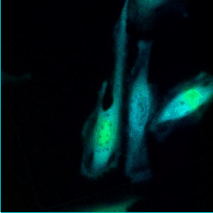Microfluidics and micro-transducers for the next generation intracellular delivery device
Cancer immunotherapies involve naturally occurring or genetically engineered tumor specific T cells. Effective cancer immunotherapies can be categorized as cancer vaccines, the blockage of inhibitory receptors (i.e., immune checkpoints), and chimeric antigen receptor (CAR) / T cell receptor (TCR) / tumor infiltrating lymphocytes (TIL)-based therapy. The blockage of immune checkpoint (PD-1) that limits antitumor activity has shown promising therapeutic results in patients with some types of cancers. However, a growing number of treated patients experience recurrence and relapse. The mechanisms underlying this relapse after a long period of dormancy at the secondary area remote from the primary tumor are currently poorly understood. One possible explanation of relapse and metastasis of cancer is tumor heterogeneity and evolutionary adaptation to a complex and dynamic tumor microenvironment (TME). Each patient has a unique response to the same drugs due to cancer heterogeneity and phenotypical diversity, which creates different cancer subtypes. We engage high frequency ultrasound, microfluidics, and gene editing tools to improve antitumor activity of T cells by efficient and safe engineering.
To achieve this goal, we have investigated biophysical effects of high frequency ultrasound to cells and develop an integrated device between microfluidics and micro-transducers. Temporal behavior of intracellular calcium concentration was measured under single cell stimulation using high frequency ultrasound (Fig. 2) and acoustic radiation force of ultrahigh frequency ultrasonic transducers were measured. We develop microfluidic chips with two design strategies for safe and efficient intracellular delivery (Fig. 3).
Further reading:
To achieve this goal, we have investigated biophysical effects of high frequency ultrasound to cells and develop an integrated device between microfluidics and micro-transducers. Temporal behavior of intracellular calcium concentration was measured under single cell stimulation using high frequency ultrasound (Fig. 2) and acoustic radiation force of ultrahigh frequency ultrasonic transducers were measured. We develop microfluidic chips with two design strategies for safe and efficient intracellular delivery (Fig. 3).
Further reading:
- Kim, S., Moon, S., Rho, S., Yoon, S.*, (2021). Measurements of acoustic radiation force of ultrahigh frequency ultrasonic transducers using model-based approach. Applied Physics Letters. 118, 184102. https://doi.org/10.1063/5.0044512
- Yoon, S., Wang, P., Peng, Q., Wang, Y., Shung, K. K., (2017). Acoustic-transfection for genomic manipulation of single-cells using high frequency ultrasound. Scientific Reports, 7, 5275.
- Pan, Y., Yoon, S., Sun, J., Huang, Z., Lee, C., Allen, M., Wu, Y., Chang, Y-J., Sadelain, M., Shung, K. K., Chien, S., Wang, Y., (2018). Mechanogenetics for the remote and non-invasive control of cancer immunotherapy. Proceedings of the National Academy of Sciences,115, 992-997
- Yoon, S., Kim, M. G., Chiu, C. T., Hwang, J. Y., Kim, H. H., Wang, Y., Shung, K. K., (2016). Direct and sustained intracellular delivery of exogenous molecules using acoustic-transfection with high frequency ultrasound. Scientific Reports, 6, 20477.



